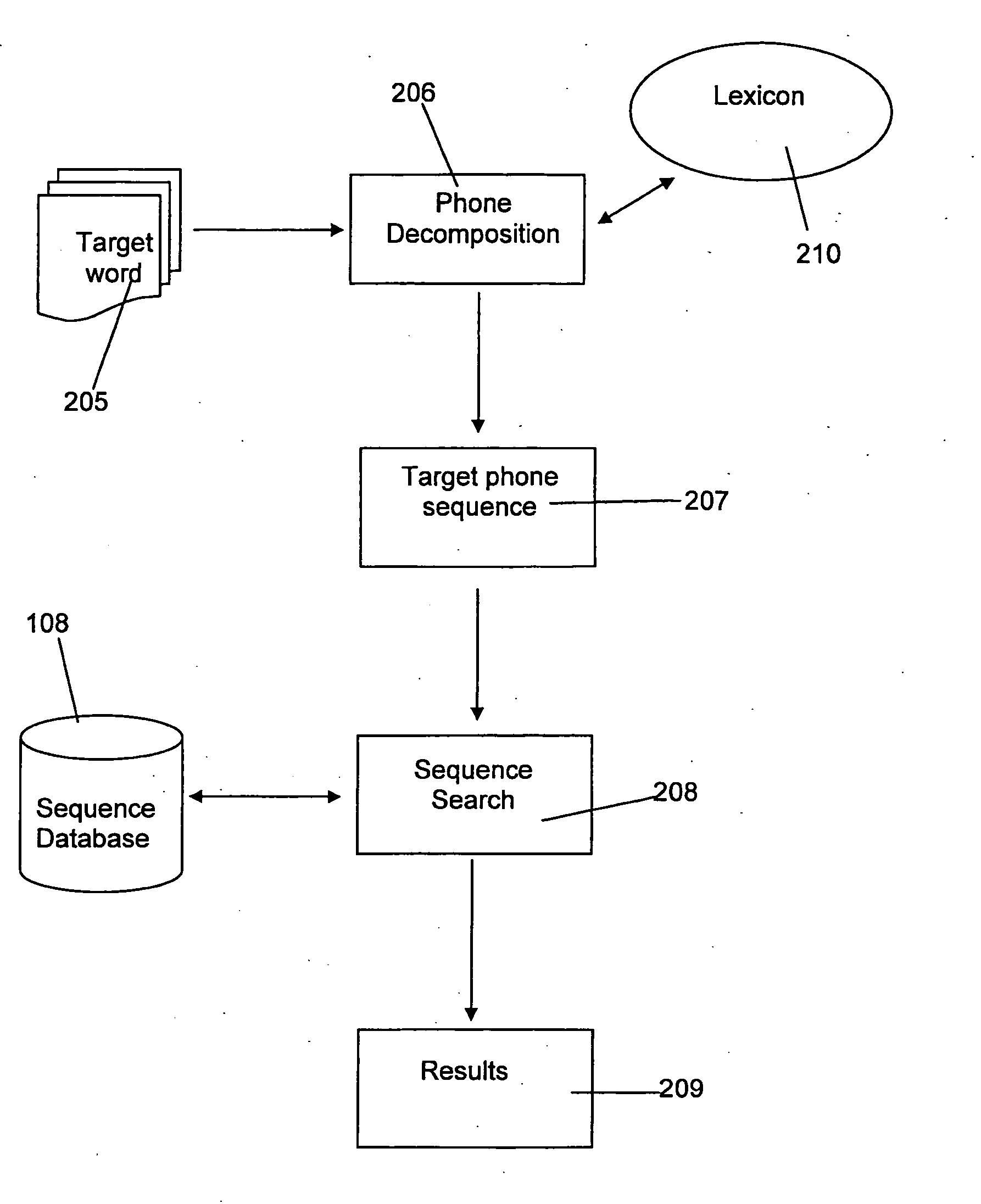Dynamic match lattice spotting for indexing speech content
a dynamic match and speech content technology, applied in the field of speech indexing, can solve the problems of not being able unable to meet the needs of speech content indexing, and not being able to scale up to search very large corpora, so as to achieve more user-friendly access
- Summary
- Abstract
- Description
- Claims
- Application Information
AI Technical Summary
Benefits of technology
Problems solved by technology
Method used
Image
Examples
Embodiment Construction
[0074] With reference to FIG. 1 there is illustrated the basic structure of a typical speech indexing system 10 of one embodiment of the invention. The system consists primarily of two distinct stages, a speech indexing stage 100 and a speech retrieval stage 200.
[0075] The speech indexing stage consists of three main components a library of speech files 101, a speech recognition engine 102 and a phone lattice database 103.
[0076] In order to generate the phone lattice 103 the speech files from the library of speech files 102 are passed through the recogniser 102. The recogniser 102 performs a feature extraction process to generate a feature-based representation of the speech file. A phone recognition network is then constructed via a number of available techniques, such as phone loop or phone sequence fragment loop wherein common M-Length phone grams are placed in parallel.
[0077] In order to produce the resulting phone lattice 103 an N-best decoding is then preformed. Such a decod...
PUM
 Login to View More
Login to View More Abstract
Description
Claims
Application Information
 Login to View More
Login to View More - R&D
- Intellectual Property
- Life Sciences
- Materials
- Tech Scout
- Unparalleled Data Quality
- Higher Quality Content
- 60% Fewer Hallucinations
Browse by: Latest US Patents, China's latest patents, Technical Efficacy Thesaurus, Application Domain, Technology Topic, Popular Technical Reports.
© 2025 PatSnap. All rights reserved.Legal|Privacy policy|Modern Slavery Act Transparency Statement|Sitemap|About US| Contact US: help@patsnap.com



